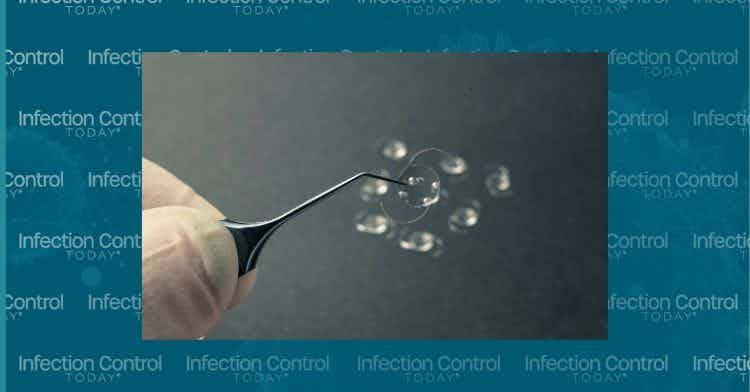Automated Washer/Sterilizers

Automating CPD Instrument
Cleaning & Decontamination
By Michael Cain
Despite significant gains in recognition of the value Central Processing Departments(CPDs) have in a hospital's overall success in the delivery of quality healthcare, fundsto upgrade or buy new equipment and hire staff are not any easier to come by. The newMillennium has dawned with CPD under more pressure to increase productivity whilemaintaining or improving quality outcomes at equal or lower cost.
With capital equipment budgets often cut to the bone, directors and managers arelooking for technological advancements to provide do-more-for-less solutions. This hasmanifested itself in renewed interest in automating the cleaning and decontaminationprocesses within CPD, with the overall objective to minimize capital equipment andoperating cost per tray or set.
Automated decontamination equipment and systems are not new to Central ProcessingDepartments. However, they have evolved over the course of 30 years, and even today'sautomation continues to evolve. When considering automating cleaning and decontaminationof surgical instruments, keep in mind that there have been two types of advancements inCPD automation. The first, and perhaps most significant, is the advancement made inautomating the quality and quantity of processes provided by today's single-chamberwashers. Upgrading from manual or semi-manual decontamination to an automaticwasher/disinfector alone can help CPD develop a quality decontamination system that willdo more for less.
The second advancement has been in automating material handling systems that supportautomated single-chamber washers, and containing or reducing the amount of staff requiredto keep them humming.
Automated Washer/Sterilizers
For years, AMP (Automated Material Processing system) have been the dominant productsof many CPDs. These two-and four-basket washer/sterilizers use in-line tables to stage,cue, load, wash, rinse, decontaminate and unload 6 to 12 baskets per hour automatically.These products can be equipped with a variety of automation options such as cross-feedtables and return conveyors.
Still in use and marketed by several manufacturers, washer/sterilizers have declined inusage largely because they require manual pre-cleaning and cannot process a significantnumber of today's more complex instruments and medical devices. Some washer/sterilizersalso cause operator back strain when loading and unloading to and from automated stations.

Automated Tunnel Washers
As early as 1983, Indexing Tunnel Washers started to appear in CPDs. These productstypically feature four or five inter-connected chambers, each with a specific processingtask. The five chamber models include a pre-wash chamber and an ultrasonic cleaningchamber, thus improving upon the AMPS products. An integral two-basket load station feedsbaskets to the door of the first chamber automatically.
By placing chambers and processes one behind the other, loads can be sequenced to indexto the next treatment process while a new load follows directly behind (Figure 1). Thetypical treatments are pre-wash for gross debris, ultrasonic wash, detergent wash, cleanrinse/final rinse/lubricate, and dry. Once all chambers are loaded, a clean basket willexit from the washer every 3 to 4 minutes, depending on the cycle program. Unloading isalso automatic and often includes a combination of power and gravity conveyors to moveclean loads away from the machine, to the prep- and pack-area, as well as to transportempty baskets back to the decontamination side.
These products were designed for CPD productivity and they accomplish the job well,turning out 30 or more instrument trays per hour. Because throughput is the primary goal,the indexing tunnel washer is not designed to clean complex instruments with channels orcorrugated airways. These must be cleaned manually or in a separate machine. The indexingtunnel washer also has a disadvantage in that if maintenance or service is required on anypart of the system, the entire system can be "down" until work is completed.Acquisition of two tunnel washers--or one tunnel washer plus a single chamber washer toprocess complex instruments and devices--as well as to serve as backup to the tunnelwasher--will reduce the impact of such situations.
Automated Single-Chamber Washers
Various designs of US-manufactured single-chamber washers have been in OR workrooms andCentral Processing Departments for many years. However, US single-chamber washers began tobe replaced by European-designed washer/disinfectors by mid-1980. Designed especially forcleaning and thermal disinfection of surgical instrumentation, they were first sold aspoint-of-use washers. In time, their cleaning benefits and large-volume loading earnedthem a place in CPD where they not only replaced manual cleaning sinks, but also replacedroutine ultrasonic cleaning.
European washer/disinfectors quickly became fully automated in all their internalprocessing capabilities. By mid-1990, washer/disinfectors started to feature automatedpower doors, auto cycle select and auto cycle start. As a direct result of the ability tonow bypass manual cleaning and ultrasonic pre-cleaning, these developments immediately ledto automated loading and unloading functions.
Automated In-Line Loading and Unloading of Single-Chamber Washers
Initially, Central Processing Departments purchased one or perhaps two automatedwasher/disinfectors either because this met the hospital needs, because of budgetconstraints, or because other decontamination equipment such as a washer/sterilizer or anindexing washer were still being used. In the situation of one or two washer/disinfectors,straight in-line loading, in-line unloading or the combinations of both operations are thebest choices. This modular approach to washer/disinfector automation also provides optionsto manage capital budgets by purchasing automation in phases.
Evolving Demands on CS
Either due to mergers or the need to consolidate in-house sterile processing functionsthrough major renovation or new construction, there is an increased demand on CPD toprocess more with limited budget relief. For all the reasons mentioned, European- typewasher/disinfectors have gained wide acceptance as the cleaning and decontaminationproduct of choice.
To meet the increasing demands placed on CPD for throughput and cost control, largehospitals are looking at the acquisition of 3, 4, and sometimes 5 single-chamber washersto replace 3 or 4 washer/sterilizers. For effective returns on investments in capitalequipment, floor space, utilities, accessories and FTEs, a Market need was created for aquality automated material handling system to integrate the operations of 3 or moresingle-chamber washers.
Closed-Loop Automation of Single-Chamber Washers
Recently, several companies have marketed an automated material handling system thatcan be called "closed-loop" automation for multiple single-chamber washers:
Reduced Floor Space--This system positions multiple washers side-by-side toreduce the floor space required, in lieu of traditional spacing of 18 inches betweenwashers for side service access.
Single-Point Loading--A feed conveyor is positioned at a right angle to the lineof washers to serve as a single loading point for racks of soiled material, regardless ofthe number of washers in the barrier wall.
Cross Feed Conveyor--Another line of conveyor is placed parallel to and directlyin front of the washers, to feed soiled loads into position in front of each chamber ofthe washers in the barrier wall.
Automated Loading--Special devices are used to push the soiled load into thechamber of each available washer.
Single-Point Unloading--The clean side of the washers is fronted with a conveyorline immediately in front of each washer. Once unloaded each rack is moved to the end ofthe line where it is off-loaded to a right angle conveyor that serves as a single-pointunload station. All operations are in reverse order of the load side conveyors.
Automated Return Conveyor--To facilitate return of empty racks to the soiledside, a power return conveyor can be positioned adjacent to the single-point unload andload stations, effectively closing the loop.
Maximize FTE's--Single-point loading and unloading of a system that serves threeor more washers, significantly reduces the amount of staff time and effort that would berequired to load and unload in-line automation for each individual washer.

Shuttle Automation of Single Chamber Washers
Reduced floor space, single-point loading and single-point unloading are undisputablebenefits for CPD users of multiple automated single chamber washers. However, the"closed loop" automation system also bears several undeniable disadvantages thatprospective buyers should consider before making a final decision.
Designed to provide the same key benefits of reduced floor space, single-point loadingand single-point unloading, the new patented Air Glide Shuttle (AGS) system fromGetinge/Castle, Inc. (Rochester, NY) has eliminated the principle disadvantages of the"closed-loop" system (Figure 2). Washers are similarly installedside-by-side to reduce floor space, and single feed conveyor provides single point loadingfor up to six washers.The AGS system provides a upper rail-mounted traveling shuttle thatpicks up soiled loads at the end of the feed conveyor and travels down the line ofwashers, stopping to load an empty chamber and then returns back to await the next load.
Each time a chamber becomes available, the shuttle will deliver a soiled load to thatwasher automatically, insert the load and return home. The washer/disinfectorautomatically closes the door and starts the cycle. Advantages:
- No floor mounted conveyor line to block the front of the washers.
- Unobstructed access to the cycle control panel.
- Unobstructed access to service panels of washers.
- Option to load washer manually when goods need to be processed quickly.
- Built-in redundancy allows washers to be loaded manually when AGS needs routine maintenance, maintenance of one washer will not disrupt operation of all other washers.
The AGS System also provides a traveling shuttle for unload operations. When a cyclehas been completed, the washer/disinfector opens the chamber door automatically. Theshuttle will leave its home position in front of the unload station automatically, traveldown the line of washers and remove the clean load from the wash chamber. The shuttle willthen return home and position the rack onto the single-point unload station. This actioncontinues automatically as long as material is being processed.
There are some obvious advantages:
- No floor mounted conveyor line to block the unload side of the washers.
- Unobstructed access to the chamber and service panels of washers.
- Option to manually unload washer when goods need to be processed quickly.
- Built-in redundancy allows washers to be manually unloaded when AGS needs routine maintenance.
- A similar off-feed conveyor provides the benefits of single-point unloading.
- An automated power return conveyor is available to close the loop by returning empty racks to the soiled side.
Automated instrument cleaning and decontamination systems will continue to find favoramong CPDs as cost containment pressures continue to mount. While automated cleaningsystems may appear to be expensive up-front, their potential for cost savings isconsiderable. They provide superior cleaning which, in the end, provides the mostimportant benefit-protection of employees and patients.
Michael Cain is the Senior Market Manager, Cleaning and Disinfection Systems forGetinge/Castle, Inc. (Rochester, NY). Currently in his thirteenth year with the company,he is responsible for disinfection product development and training.
The Sterile Processing Conference Survival Guide: How to Make the Most of Your Next Event
March 25th 2025From expert speakers to cutting-edge tools, sterile processing conferences, like the 2025 HSPA Annual Conference and the SoCal SPA's Spring Conference, offer unmatched opportunities to grow your skills, expand your network, and strengthen your department's infection prevention game.
Redefining Material Compatibility in Sterilization: Insights From AAMI TIR17:2024
March 24th 2025AAMI TIR17:2024 provides updated, evidence-based guidance on material compatibility with sterilization modalities. It offers essential insights for medical device design and ensures safety without compromising functionality.









